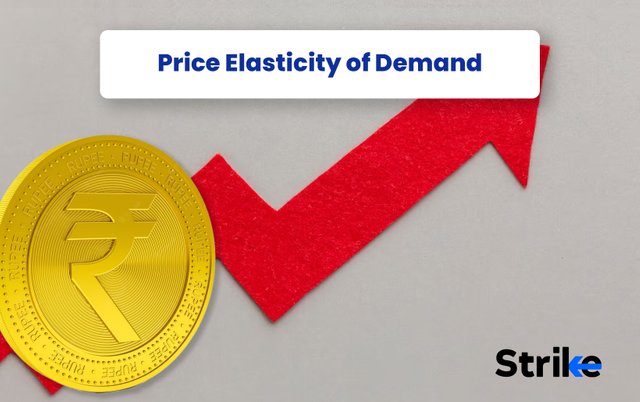
Introduction:
Price elasticity of demand (PED) is a fundamental concept in economics that measures the responsiveness of quantity demanded to changes in price. It quantifies the sensitivity of consumers to price fluctuations and plays a crucial role in pricing strategies, revenue optimization, and market analysis. In this comprehensive guide, we will explore the concept of price elasticity of demand, its calculation methods, practical implications, and its significance in understanding consumer behavior in markets.
Understanding Price Elasticity of Demand:
Price elasticity of demand is defined as the percentage change in quantity demanded divided by the percentage change in price. It measures how much the quantity demanded of a good or service changes in response to a change in its price. The formula for calculating price elasticity of demand is:
�
�
�
=
%
change in quantity demanded
%
change in price
PED=
% change in price
% change in quantity demanded
PED can be classified into three broad categories based on its magnitude:
Elastic Demand (PED > 1): When the absolute value of PED is greater than 1, demand is considered elastic. Inelastic demand is characterized by a relatively large change in quantity demanded in response to a small change in price. In this case, consumers are highly responsive to price changes, and a decrease in price leads to a proportionally larger increase in quantity demanded, resulting in a total revenue increase.
Unitary Elastic Demand (PED = 1): Unitary elastic demand occurs when the absolute value of PED is equal to 1. In this scenario, the percentage change in quantity demanded is equal to the percentage change in price. Unitary elastic demand indicates that total revenue remains constant as price changes, as the increase in quantity demanded offsets the decrease in price.
Inelastic Demand (0 < PED < 1): Inelastic demand occurs when the absolute value of PED is less than 1. In this case, consumers are relatively unresponsive to price changes, and a change in price leads to a proportionally smaller change in quantity demanded. Despite the decrease in price increasing the quantity demanded, the total revenue decreases due to the smaller magnitude of the increase in quantity.
Practical Applications of Price Elasticity of Demand:
Price elasticity of demand has significant implications for businesses, policymakers, and market analysts:
Pricing Strategies: Understanding the price elasticity of demand helps businesses determine optimal pricing strategies. For products with elastic demand, reducing prices can lead to increased revenue by attracting more customers. Conversely, for products with inelastic demand, raising prices may result in higher profits as consumers are less likely to reduce their purchases significantly.
Revenue Management: Price elasticity of demand aids in revenue optimization by identifying price points that maximize total revenue. Businesses can use elasticity estimates to adjust prices dynamically, especially in industries with fluctuating demand or seasonal variations.
Product Differentiation: Businesses can use price elasticity of demand to assess the impact of product differentiation on consumer demand. By understanding how consumers respond to changes in product features or quality, companies can tailor their offerings to meet specific market demands effectively.
Government Policies: Policymakers utilize price elasticity of demand to design and evaluate economic policies, such as taxation and subsidies. For instance, inelastic goods like gasoline may be subjected to higher taxes without significantly affecting consumer demand, while elastic goods like luxury items may face lower tax rates to encourage consumption.
Factors Affecting Price Elasticity of Demand:
Several factors influence the price elasticity of demand for a particular good or service:
Availability of Substitutes: The availability of substitutes significantly affects the elasticity of demand. Goods with close substitutes tend to have more elastic demand as consumers can easily switch to alternative products in response to price changes.
Necessity vs. Luxury: Necessities like food and utilities typically have inelastic demand as consumers require them regardless of price fluctuations. Conversely, luxury items tend to have elastic demand as consumers can forgo or delay purchases in response to price increases.
Time Horizon: The elasticity of demand may vary over different time horizons. In the short run, demand for many goods may be relatively inelastic as consumers may not have immediate alternatives. However, in the long run, consumers have more flexibility to adjust their behavior, leading to more elastic demand.
Conclusion:
Price elasticity of demand is a crucial concept in economics that provides insights into consumer behavior and market dynamics. By understanding the responsiveness of quantity demanded to price changes, businesses can make informed decisions regarding pricing strategies, revenue optimization, and product differentiation. While elasticity estimates offer valuable guidance, it is essential to consider various factors that influence consumer demand to develop effective strategies tailored to specific market conditions. By incorporating price elasticity analysis into decision-making processes, businesses can adapt to changing market environments and enhance their competitiveness in the global marketplace.